Experience superior indoor air quality monitoring with Trackpac's comprehensive IoT platform. Our advanced system provides real-time IAQ monitoring, instant alerts for air quality changes, and detailed analytics through our user-friendly dashboard. Perfect for maintaining healthy indoor environments in offices, schools, and commercial spaces.
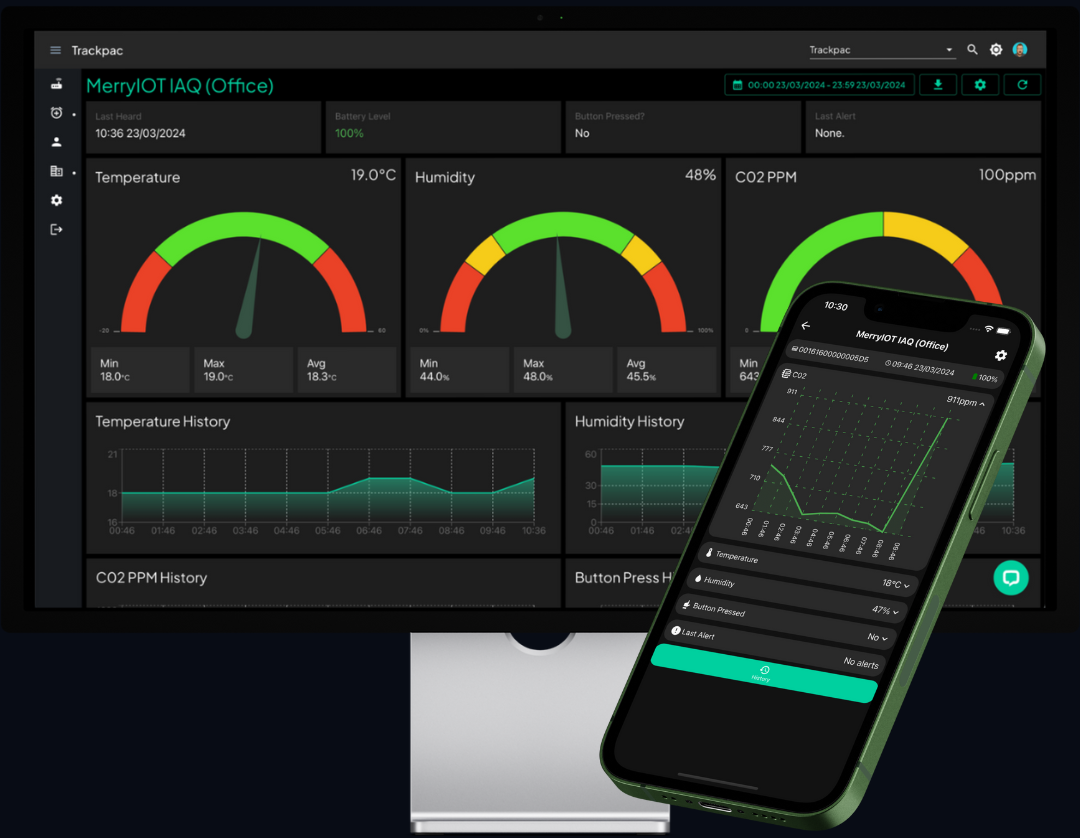
Transform your indoor environment with continuous air quality monitoring that delivers immediate value and long-term benefits. Our monitoring system provides instant visibility into air quality changes, enabling proactive management and ensuring optimal conditions for occupant health and comfort.
Monitor and maintain healthy air quality levels to protect occupants from respiratory issues and other health concerns.
Meet regulatory requirements with automated air quality logging and comprehensive reporting capabilities.
Improve workplace productivity by maintaining optimal indoor air quality conditions for employees.
Receive immediate notifications when air quality levels deviate from acceptable ranges.
Monitoring indoor air quality is easy with the Trackpac platform. Our advanced sensor management system lets you react to your indoor air quality data in real time.
Scan the QR code on your indoor air quality sensor and you're ready to go. Already own an existing air quality sensor? No problem! Just add the keys and go.
Setup Rules with c02, TVOC, AQI, Temperature, Humidity, PM2.5, PM10 or any other sensor data your air quality sensor supports.
Get instant Email & SMS alerts when your air quality sensor detects a change in air quality.
Sensors on the Trackpac platform are grouped by Organisations. Add members to your organisation and share sensor data with your team.
Built from the ground up on serverless architecture, our platform is fast and reliable. We can scale to meet your needs and ensure that your data is always available.
Our API allows you to integrate your air quality sensors with other systems and platforms. API Documentation is available here: https://v2-api.trackpac.io/docs
We'd love to show you how Trackpac can help you monitor your sensors and get alerts. Schedule a demo with us today!
30 minutes • No commitment required
Indoor air pollution poses significant health risks both in the short and long term. Symptoms of poor indoor air quality include irritation of the eyes, nose, and throat, headaches, nausea, dizziness, and fatigue. Additionally, exposure to indoor air pollution can lead to various respiratory illnesses, such as asthma, lung cancer, pneumonia, systemic hypertension, chronic obstructive pulmonary disease (COPD), Legionnaires’ disease, and humidifier fever.
Indoor air quality can be compromised by various pollutants, including volatile organic compounds (VOCs) from paints and cleaning products, particulate matter (PM) from cooking and smoking, carbon monoxide (CO) from combustion appliances, nitrogen dioxide (NO2) from gas stoves, formaldehyde from building materials, biological contaminants like mold spores and pet dander, radon gas, and asbestos fibers. Monitoring and addressing these pollutants are vital for ensuring healthy indoor environments.
In the workplace, poor indoor air quality can contribute to decreased productivity, increased absenteeism, and potential legal issues. However, by implementing effective indoor air quality monitoring measures, employers can ensure that workers enjoy healthier environments with cleaner air, devoid of harmful chemicals and pollutants. Consequently, employers often experience higher retention rates, improved productivity, and reduced absenteeism among their workforce.
Employers may experience reduced work efficiency and performance due to employees' discomfort and health issues caused by poor air quality. Furthermore, high rates of absenteeism due to respiratory illnesses can disrupt workflow and affect overall business operations. By investing in monitoring indoor air quality and implementing measures to improve it, businesses can potentially reduce healthcare expenses, enhance productivity, and create a more conducive work environment for their employees. Thus, addressing indoor air quality not only benefits individuals' health but also contributes to economic well-being and productivity in both residential and commercial settings.
Deploy enterprise-grade indoor air quality monitoring sensors with Trackpac. Our IoT-enabled sensors provide accurate, real-time measurements of CO2, VOCs, particulate matter, temperature, and humidity. Easy to install and integrate with your existing systems for comprehensive air quality management.
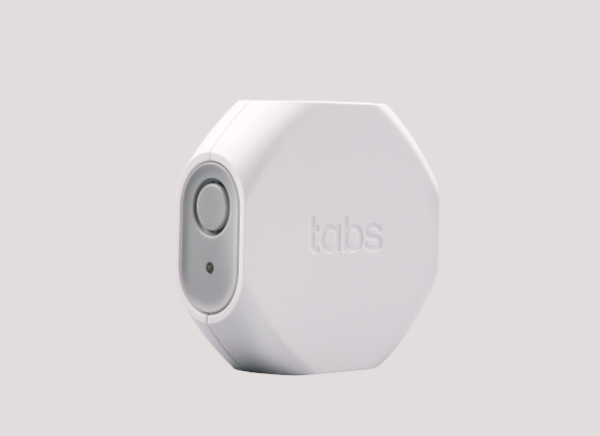
Compact IP65-rated LoRaWAN temperature and humidity sensor with up to 10 years of battery life for environmental monitoring
Find Out More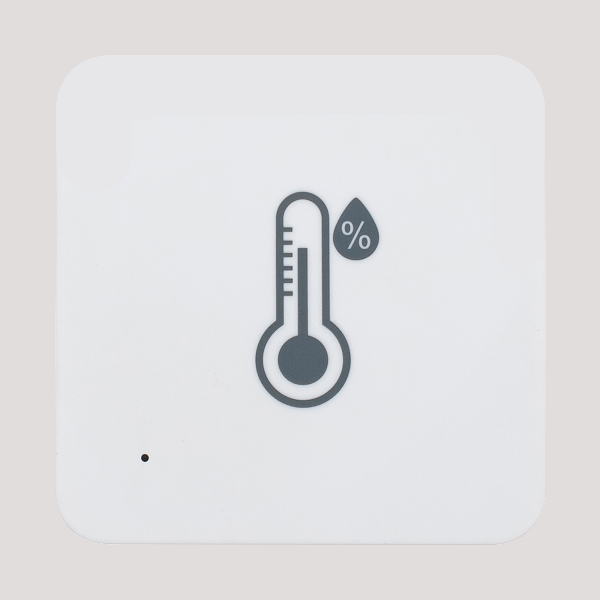
IP65-rated LoRaWAN temperature and humidity sensor with up to 10 years of battery life for indoor and outdoor environmental monitoring
Find Out More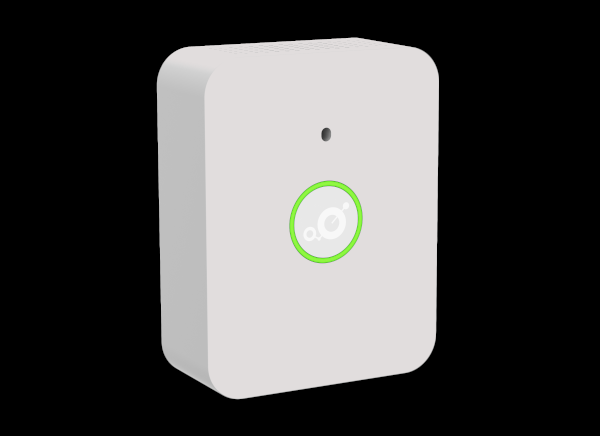
LoRaWAN indoor air quality sensor for monitoring temperature, humidity, and CO2 levels with LED indicator and long battery life
Find Out More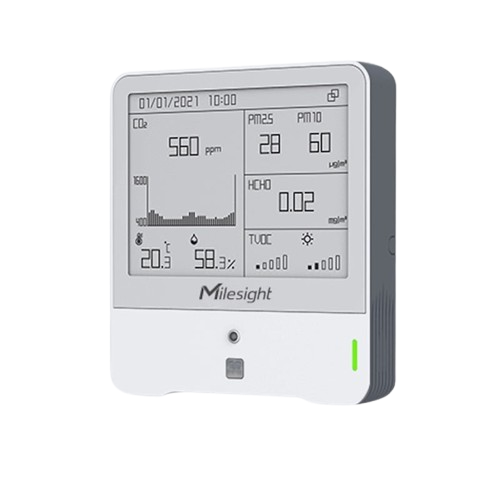
Air Quality Sensor for Indoor Air Quality with Temperature, Humidity, C02, TVOC, PM2.5, PM10
Find Out MoreEverything you need to know about Trackpac's IoT sensor management platform
Low-cost indoor air quality monitors can provide instant feedback about specific pollutants that may be present in indoor air. These monitors can detect a variety of pollutants, including particulate matter, volatile organic compounds (VOCs), carbon dioxide (CO2), carbon monoxide (CO), temperature and humidity levels. By using a combination of sensors, these monitors can provide a comprehensive view of indoor air quality and help identify potential issues that may affect health and comfort.
For your comfort and health, it is worth getting an air quality monitor. Indoor air quality can have a significant impact on your health and well-being, and monitoring the air quality in your home can help you identify potential issues and take steps to improve it. By using an air quality monitor, you can track the levels of pollutants in your home and make informed decisions about how to improve the air quality.
Poor indoor air quality can cause a variety of symptoms, including headaches, fatigue, dizziness, shortness of breath, coughing, sneezing, and eye, nose, and throat irritation. These symptoms can be exacerbated by exposure to specific pollutants, such as volatile organic compounds (VOCs), particulate matter, carbon monoxide, and mold spores. If you experience these symptoms in your home, it may be a sign that the air quality is poor and needs to be addressed.
There are several ways to check the air quality in your house in the UK. You can use an indoor air quality monitor to measure the levels of pollutants in your home, such as particulate matter, volatile organic compounds (VOCs), carbon dioxide (CO2), and carbon monoxide (CO). You can also check the air quality index (AQI) for your area, which provides information about the levels of outdoor air pollution. Additionally, you can take steps to improve indoor air quality by increasing ventilation, using air purifiers, and reducing sources of pollution.
Indoor air quality is measured using various sensors and instruments that detect pollutants such as particulate matter, volatile organic compounds (VOCs), carbon dioxide (CO2), carbon monoxide (CO), and humidity levels. These sensors may be standalone devices or integrated into comprehensive indoor air quality monitoring systems.
An indoor air quality monitoring system is a comprehensive solution designed to continuously monitor and analyze the quality of air within indoor environments. These systems typically consist of sensors, data collection devices, and software platforms that provide real-time monitoring, data analysis, and alerts for various pollutants and environmental conditions.
Trackpac makes monitoring indoor air quality affordable. Our platform is designed to be cost-effective and accessible for individuals and organizations looking to improve their indoor air quality. We charge a flat rate of £15 per sensor, per year with volume discounts available for larger deployments. Contact us for more information on pricing and custom solutions.
Yes, home air quality tests can be worth it for individuals concerned about the health and comfort of their indoor environment. These tests can provide valuable insights into the levels of pollutants present in the air, helping homeowners identify potential problems and take steps to improve indoor air quality. However, it's essential to choose reputable testing kits or services and to interpret the results accurately.
Common pollutants found in indoor air include particulate matter (PM), volatile organic compounds (VOCs), carbon dioxide (CO2), carbon monoxide (CO), nitrogen dioxide (NO2), formaldehyde, and mold spores. These pollutants can have various adverse effects on health, ranging from respiratory irritation and allergies to more severe conditions such as asthma, cardiovascular disease, and even cancer.
Indoor air quality can often be more concerning than outdoor air quality due to several factors. Unlike outdoor air, which has natural dispersion mechanisms and pollutant removal processes, indoor environments can trap and accumulate pollutants from various sources such as building materials, furnishings, cleaning products, and human activities. Additionally, indoor spaces are often more densely populated, leading to higher concentrations of pollutants per person. Poor ventilation and inadequate air circulation further exacerbate indoor air quality issues.
Poor indoor air quality can have disproportionately adverse effects on specific demographics, including children, the elderly, and individuals with respiratory conditions. Children and the elderly are often more vulnerable to the effects of indoor air pollutants due to developing or weakened immune systems and respiratory systems. Individuals with respiratory conditions such as asthma or chronic obstructive pulmonary disease (COPD) may experience exacerbated symptoms, increased frequency of attacks, or worsening lung function in response to poor indoor air quality.
Common sources of indoor air pollution in residential and commercial settings include combustion appliances (e.g., stoves, heaters), tobacco smoke, building materials and furnishings (e.g., paints, carpets), household cleaning and personal care products, pesticides, volatile organic compounds (VOCs) emitted from furniture and electronics, mold and mildew, and outdoor pollutants that infiltrate indoor spaces.
Ventilation plays a crucial role in maintaining good indoor air quality by diluting indoor air pollutants and providing fresh outdoor air. Proper ventilation helps remove stale air, moisture, and contaminants from indoor spaces, reducing the risk of indoor air quality issues. Strategies to improve ventilation include using mechanical ventilation systems (e.g., exhaust fans, air purifiers), opening windows and doors to allow natural ventilation, and implementing air exchange systems to introduce fresh outdoor air into enclosed spaces.
The primary technologies used in indoor air quality monitoring systems include sensors for measuring various pollutants and environmental conditions, data collection devices for gathering sensor data, and software platforms for analyzing and presenting monitoring data. These systems may utilize sensors such as particulate matter sensors, gas sensors (e.g., CO2, CO, VOC sensors), humidity sensors, temperature sensors, and pressure sensors. Data collected by these sensors are transmitted to a central monitoring unit or cloud-based platform, where it is processed, analyzed, and displayed in real-time.
Indoor air quality can significantly impact productivity and cognitive function in office environments. Poor air quality, characterized by high levels of pollutants such as CO2 and VOCs, can lead to symptoms like headaches, fatigue, and difficulty concentrating, ultimately reducing employee productivity and performance. Conversely, good indoor air quality with adequate ventilation and low pollutant levels has been shown to enhance cognitive function, decision-making, and overall well-being.
Air purifiers are devices designed to remove pollutants and allergens from indoor air, thereby improving air quality. They work by drawing air through a series of filters that capture particles such as dust, pollen, pet dander, and airborne contaminants. Some air purifiers also feature additional technologies like UV-C light or activated carbon to neutralize odors and kill bacteria or viruses. The effectiveness of air purifiers depends on factors such as the type of pollutants present, the size of the purifier, and the quality of the filters used.
Prolonged exposure to indoor air pollutants can pose various health risks, ranging from mild irritation to severe respiratory and cardiovascular conditions. Common health effects of indoor air pollution include allergic reactions, asthma exacerbation, respiratory infections, cardiovascular disease, and even long-term lung damage or cancer in extreme cases. Vulnerable populations such as children, the elderly, and individuals with pre-existing health conditions may be particularly susceptible to the adverse effects of indoor air pollutants.
Indoor air quality monitoring plays a crucial role in sustainable building design and operations by optimizing energy efficiency, occupant comfort, and environmental performance. By continuously monitoring indoor air quality parameters such as CO2 levels, temperature, and humidity, building operators can implement demand-controlled ventilation strategies to reduce energy consumption while maintaining healthy indoor environments. Additionally, data from indoor air quality monitoring systems can inform building design decisions, equipment selection, and maintenance practices to minimize environmental impact and promote sustainability.
Conducting indoor air quality assessments during the building design and construction phases allows architects, engineers, and developers to proactively address potential indoor air quality issues and implement preventive measures. By considering factors such as building materials, ventilation systems, and pollutant sources early in the design process, it's possible to optimize indoor air quality, occupant comfort, and health outcomes while minimizing the need for costly retrofitting or remediation efforts post-construction. Indoor air quality assessments also support compliance with green building standards and certification programs.
A comprehensive indoor air quality monitoring system consists of several key components: advanced sensors for measuring various pollutants (CO2, VOCs, particulate matter), real-time data collection and analysis capabilities, alert systems for threshold violations, mobile accessibility for remote monitoring, and detailed reporting features for trend analysis and compliance documentation. These components work together to provide a complete picture of your indoor air quality and help maintain healthy indoor environments.
Still have questions?
Contact our support team